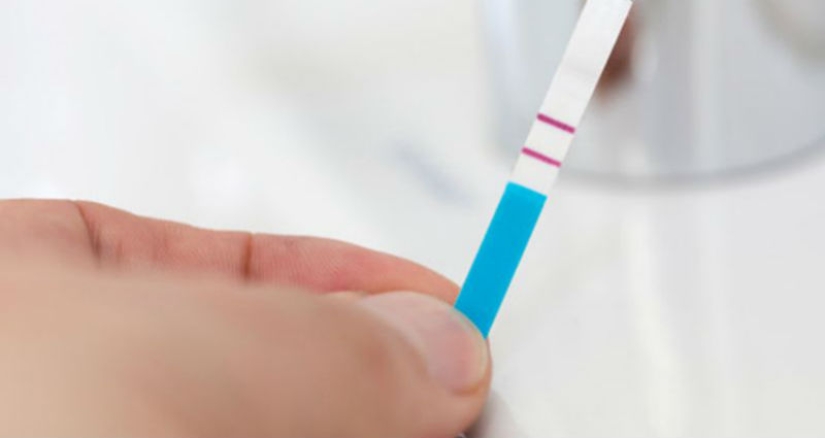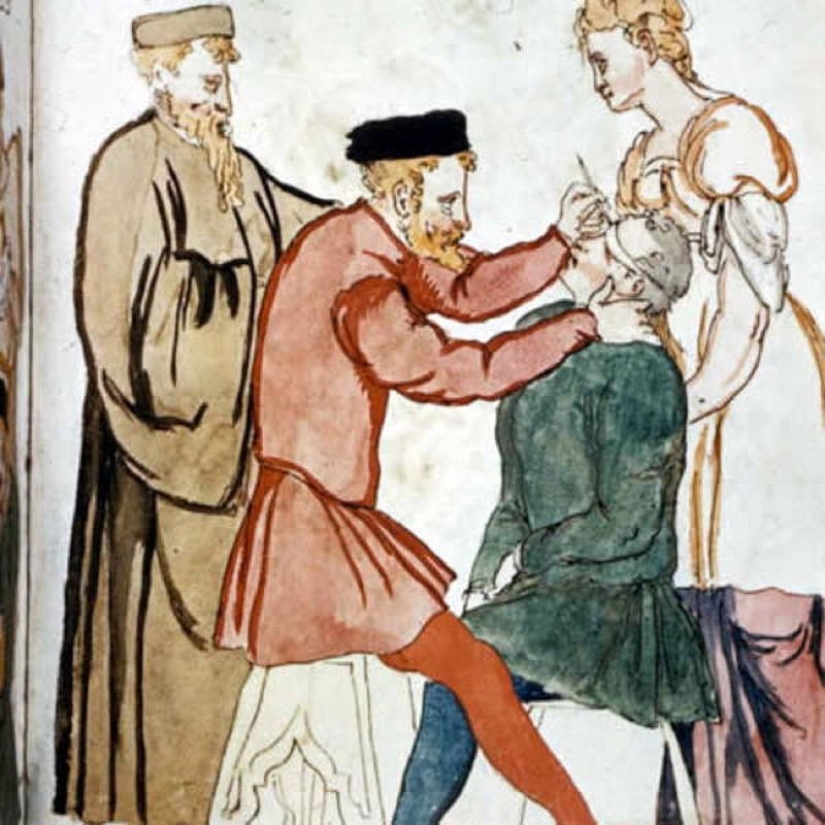9 very strange methods by which our ancestors diagnosed pregnancy
Categories: Health and Medicine | History
By Pictolic https://pictolic.com/article/9-very-strange-methods-by-which-our-ancestors-diagnosed-pregnancy.htmlToday, it is not difficult to determine whether a woman is pregnant or not. It is enough to go to the pharmacy, buy a test strip and spend literally a few minutes of time. These tools were widely available back in 1978, however, then it took 2 hours to get a result, and the reliability of the tests was only 20%.
But earlier, with the definition of pregnancy, everything was much more complicated. What means our distant ancestors resorted to, we will tell in this review.


1. Wheat-barley test
One of the first pregnancy tests, if not the very first, appeared in ancient Egypt. In 1350 BC, women were advised to urinate on wheat and barley grains for several days. If wheat sprouted, it meant that a woman should wait for a girl, and if barley sprouted, then a boy. If nothing sprouted, then the woman was not pregnant.
What is most interesting, this test really worked: in 1963, scientists conducted an experiment and found that in 70% of cases, the urine of pregnant women can cause seeds to germinate, and the urine of non-pregnant women or men did not lead to such an effect.

2. Onion test
While the ancient Egyptians checked whether a woman was pregnant with wheat and barley, the ancient Greeks used for these purposes ... onions. Hippocrates, who today is considered the founder of medicine, proposed the following test: a woman who wanted to be tested for pregnancy had to insert an onion or another strongly smelling vegetable into the vagina at night. If her breath smelled like onions the next morning, then she wasn't pregnant. This was based on the idea that if a woman's uterus is open, the smell of onions will penetrate to the mouth, like through a wind tunnel.

3. Beer test
In ancient Egyptian papyri, another strange way of determining pregnancy was read out. It was necessary to pour a lot of beer and fermented wort on the floor indoors, and then put a woman in this puddle. Unsurprisingly, the smell in the room made her feel sick. And by the abundance of vomiting, it was determined whether she was pregnant.

4. The latch test
In a medical treatise of the end of the XV century, it was said: "If you want to know if a woman is pregnant, you need to ask her to urinate in a basin, and then put a latch or key in this basin for three to four hours. After that, you need to drain the urine, remove the latch and see if there is an imprint of it on the bottom of the pelvis. If so, the woman is pregnant."

5. The Prophets of Urine
In the XVI century, European "urine prophets" claimed that they could determine whether a woman was pregnant by the color and other characteristics of her urine. Some also mixed urine with wine and observed the result (interestingly, alcohol can really react to proteins present in the urine of a pregnant woman). Also, these "prophets" determined by urine not only pregnancy, but also the diseases that their patient suffered from.

6. Woman's eyes
The physician Jacques Gullemo, who lived in the XVI century, argued that you can judge a woman's pregnancy just by looking into her eyes. Gullemo, the author of a famous treatise on ophthalmology, said that at the beginning of the second month, "the eyes of a pregnant woman are deeply set, the pupils are small, the eyelids are lowered, and there are swollen veins in the corners of the eyes." This is probably not true, but the doctor was right about one thing: during pregnancy, a woman's vision can really change.

7. Chadwick's Sign
Even at the very beginning of pregnancy (at about six to eight weeks), the cervix, vagina and labia may acquire a dark bluish or purple-red hue due to an increase in blood flow to this area. This sign of pregnancy, along with other traditional signs, such as a craving for salty, was first noticed in 1836 by the French obstetrician James Chadwick (he received the same name - "Chadwick's sign"). But, given the prudery of doctors of that time, such signs of pregnancy were almost never checked.

8. Rabbit test
In addition to observation tests, such as the "Chadwick's sign", up to the XX century there was a very unpleasant way of determining pregnancy, which tragically ended for rabbits, mice and rats. In the 1920s, two German scientists, Selmar Aschheim and Bernhard Zondek, found a certain hormone in the urine of pregnant women that is associated with ovarian growth (today this hormone is known as chorionic gonadotropin). A pregnant woman's urine injection was administered to immature rabbits, rats or mice to encourage their ovaries to develop. On the fifth day after the injection, the animal was killed and opened to see the result.

9. Frog test
Although this method worked on the same principle as the rabbit test, it was more humane because the animal remained alive. In the late 1940s, scientists found that if a pregnant woman's urine was injected into a live toad or frog, then within 24 hours she would begin to spawn.
Keywords: Pregnancy | Women | Methods | Test
Post News ArticleRecent articles

If it seems to you that the New Year holidays are being celebrated somehow incorrectly, then you definitely haven't seen these ...

While the sun practically disappeared from the sky above the Arctic Circle and the night seemed endless, the Vikings prepared to ...
Related articles

Motherhood significantly changes a woman's body. But there are more profound changes affecting the nature and Outlook. Reflected in ...

American artist Lee Price is sure that eating is a completely natural process, but many are ashamed of their attitude to food, ...

No wonder long hair has been considered a woman's adornment for many centuries. Girls with luxurious curls attract attention and ...

Sometimes reality presents us with amazing coincidences. Objects blend perfectly into the background, animals become invisible in ...